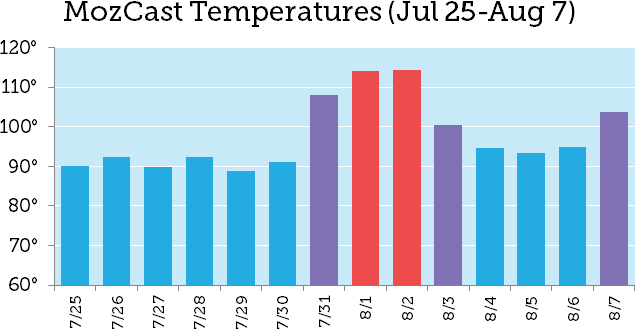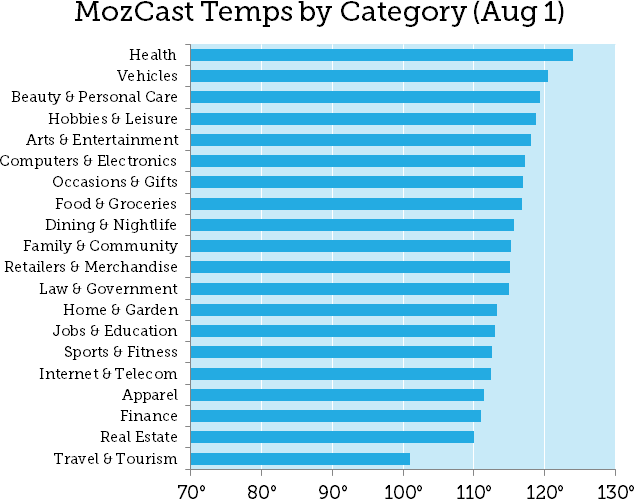Choosing the Right Social Media Platform For Your Medical Practice
When implementing a successful social media marketing strategy for your practice, you must first
Amber Turner On Jan 27, 2023
By Mike Patch On Aug 31, 2018 . 0 Comments
On August 1st, 2018, Google rolled out a broad core algorithm update for search results. While Google is continually making adjustments throughout the year, this update seems to be one of the most significant changes to search results in recent years.
This week we released a broad core algorithm update, as we do several times per year. Our guidance about such updates remains the same as in March, as we covered here: https://t.co/uPlEdSLHoX
— Google SearchLiaison (@searchliaison) August 1, 2018
Google has stated that this is a “global” update, which implies every niche and every type of website will be impacted in some way, big or small. However, based on the data being shared by companies and SEO consultants, most seem to think medical and health niches have seen the biggest update. Barry Schwartz has coined this the “Medic Update” as a large number of sites in medical niches were affected.

MozCast is a fun twist on Google’s algorithm update where they offer “a weather report” on daily changes. The hotter and stormier the weather, the more Google’s rankings change. As you can see from the graphic above, temperatures peaked on August 1-2 (both around 114°F), with a 4-day period of sustained rankings flux (purple bars are all over 100°F).
MozCast was also able to sort the most significant changes into categories.

The “Health” category does appear to be the most impacted by this update. Keywords in that category had a daily average temperature of 124°F. More specifically, the Google algorithm update appears to have heavily targeted “Your Money or Your Life” queries (YMYL).
YMYL was first introduced to webmasters and SEO’s back in 2013. It was added as a part of an update to the “Search Quality Raters Guidelines” that pushed for identifying expertise and authority on the web. YMYL pages are specific web pages that Google wants quality raters to hold to a higher “Page Quality” standard than other types of web pages.
In a nutshell, websites should show they are an authority on the subject if they are making recommendations to the reader that could have an impact on money or pages that offer medical or health information that could impact your physical well being.
The “Your Money or Your Life” concept is mentioned in about a dozen other places throughout the 137-page document. Here are some quick takeaways:
It’s interesting that something that was first introduced back in 2013 is being amplified in an update in 2018. What is the reason this page quality requirement is needed now more than ever?
My take is that this update has a lot to do with the lack of trust in media today. The “Fake News” of the world has people confused or second-guessing information, which is not good. If you can’t trust the information that is provided to you, then how can you make the correct decisions in your life?
This becomes a huge problem for medical sites, which I work with daily. If the “medic” update is targeting medical clinics and practices with the intention of forcing content to have more authority, then how do these businesses operate running blogs to provide information about services, illnesses, or recent news in their field? Most doctors don’t have time to update their website let alone time to create content, which is why they hire digital marketing teams to do that for them. A skilled writer can research a topic and have the doctor approve the content, but if the qualifications of this writer don’t meet the necessary requirements to be making medical recommendations, what is the best practice? How does a site you show authority?
Many SEO’s are starting to speculate that this “medic’ update is connected to Google’s even more recent change to their Quality Rater Guidelines. E-A-T which stands for “Expertise, Authoritativeness, and Trust” go hand in hand with what many are seeing from the sites that saw a spike from the August 1st Google update.
SEMRush published an article on E-A-T with advice on how to better adjust to this quality requirement, here are a few takeaways:
A lot of this is common sense in my opinion, but at least this gives SEO’s a starting point to re-look over a site negatively affected by the medic update.
Two of the clients that I work for saw considerably different results after the August first update. The same web designer designed both sites, and both had content created by the same freelance writer.

Client A saw large gains in organic search in May and June. I worked on improving many of their service pages which resulted in more conversions. There were specific content strategies put in place to target niche related issues that the service pages offered to help with. I improved the internal linking and navigation of the site for easier access to these service pages, and the service pages themselves saw a substantial update to topic-related content. I think it’s key to point out that each service page featured links and pictures to the doctor profile pages to provide a great deal of information for the reader. You could very easily see the doctor’s experience in this specific field.
After the August 1st Medic update, there was only a small drop off from the keywords I was working on. The overall organic search traffic rate for the site as a whole took a slight dip, but for the most part, the update was just a bump in the road. However, moving forward, I am curious to see if I can rank pages the same way. Things may be a little more challenging seeing the results and drop-offs from other industries.

Client B saw a significant hit from the August 1st algorithm update. This site has been a challenge from the beginning to upgrade overall content to its key service pages. Information is harder to come by, and doctors are not as open to the idea about providing pictures for their “about the staff “page or providing references to personal credentials that would give them an E-A-T quality ranking score.
For most SEO’s this ranking update had little impact on their day to day, but for those who work with medical sites directly, it was a big shock. I have read that some medical sites in the USA right now have fallen off the map and seen organic traffic drops as high as 70%. That’s crippling to a business.
While I do believe there is a correlation between E-A-T and this recent update, I’m not going to lose sleep over it. I can’t start asking the client to write their own articles, so instead, my goal is to improve the credibility of the author that is writing the content. On both client sites, there was little acknowledgment of the blog author. Simply writing “Staff” as the author name is just not good enough. Instead, I’m in the process of creating an Author box at the bottom of all articles, that features a small yet descriptive bio and includes links to the author’s Linkedin page.
I also plan to purge low-quality content site wide. Anything that isn’t up to standards will either be upgraded or removed. My goal is to also find direct competition that had a positive impact from this update and compare. SEO’s tend to look at competition from a link base level perspective, but I think I need to compare sites from a branding and authoritative view.
Thanks for reading, Like Koda Digital Design on Facebook to read future articles.
If you're ready to discover the strengths and weaknesses of your
digital marketing efforts, without all the confusing techno-babble,
then enter your healthcare website below.